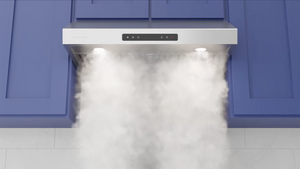Get a Sparkling Clean Dishwasher with Baking Soda and Vinegar
It turns out that the appliances that do all the washing and cleaning in our homes need a little cleaning themselves! Your dishwasher is one of those hard-working appliances in your home that could use a little TLC every now and again. As with any appliance that deals with food residue and moisture, it can become a breeding ground for unpleasant odors, grime, and even mold. Fortunately, you don’t need to rely on harsh chemicals or expensive cleaners to keep your dishwasher in good shape.
In fact, you likely already have the two common household ingredients required: baking soda and vinegar. Here’s how to use these ingredients to clean your dishwasher in a snap.


The Magic Behind Baking Soda + Vinegar
So, what makes baking soda and vinegar must-have products for cleaning your dishwasher?
Baking soda brings the natural abrasion you need to scrub away grime without scratching surfaces. Vinegar, on the other hand, is a mild acid that dissolves mineral deposits, grease, and food residues. When you combine the abrasive nature of baking soda with the acidic nature of vinegar, you get a powerful cleanser that can tackle most of the issues you might face in a dishwasher.
Step 1: Prepare Your Dishwasher
To make cleaning easier, do a bit of prep work by:
- Removing any racks and utensil holders from your dishwasher
- Checking the drain area for any large food particles or debris and removing them to prevent clogs.
- Removing and rinsing the filter under warm water to dislodge any trapped food particles.
Step 2: Clean the Spray Arms
The dishwasher spray arms distribute water throughout the appliance. If they’re clogged with food particles or mineral deposits, they won’t work effectively. To clean them, remove the spray arms if possible. (Refer to your dishwasher’s manual for instructions.)
Rinse them under running water, and use a small brush or toothpick to clear out anything in the spray holes. For stubborn deposits, you can soak the spray arms in a mixture of vinegar and warm water.
Step 3: Wipe Down the Interior
Next, use a damp washcloth or sponge to wipe down the interior walls and the door of your dishwasher. You may notice grime accumulated in the edges and crevices. If so, try using a mix of water and a small amount of baking soda to scrub away any stubborn spots.
Step 4: Run a Vinegar Cycle
Place a dishwasher-safe bowl filled with white vinegar on the top rack of your dishwasher. Run a hot water cycle with no dishes in the machine. The vinegar will help dissolve any mineral deposits and grease while neutralizing any unpleasant odors.
Step 5: Sprinkle Baking Soda
After the vinegar cycle is complete, sprinkle a cup of baking soda evenly across the bottom of your dishwasher. This will help to freshen up the interior and tackle any remaining stains or odors. Run a short, hot water cycle to allow the baking soda to work its magic.
Step 6: Final Touches
Once the cycle is complete, check the interior of your dishwasher. If necessary, use a clean, damp cloth to wipe away any remaining baking soda residue. Replace the racks and utensil holders, and your dishwasher should be ready for action!
Additional Tips and Tricks
- Regular Maintenance: To keep your dishwasher running smoothly, repeat this cleaning process every 1-2 months. Regular maintenance helps prevent buildup and keeps your appliance in good condition.
- Avoid Overloading: Overloading your dishwasher can prevent proper water circulation and cleaning. Ensure that dishes are placed correctly and that spray arms can move freely.
- Check for Leaks: While cleaning, inspect the dishwasher for any signs of leaks or other issues. Addressing these early can prevent more significant problems down the line.
Baking soda and vinegar are not only effective but also eco-friendly and budget-friendly alternatives to commercial dishwasher cleaners. You can also use them to help tackle your monthly deep cleaning list for your kitchen!








